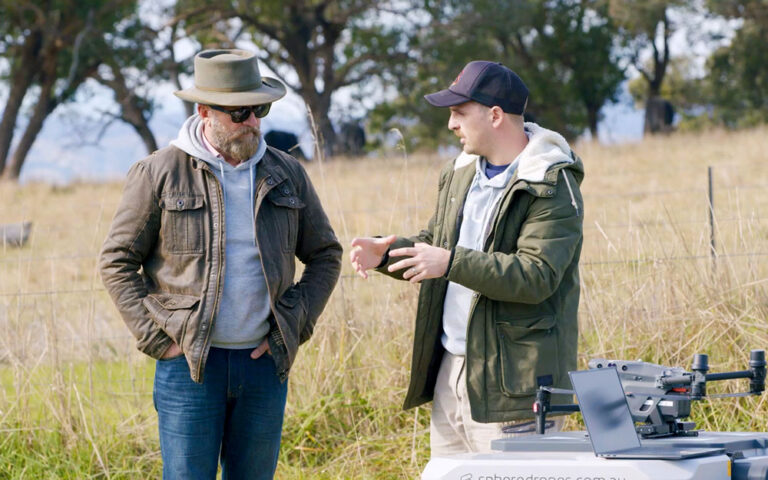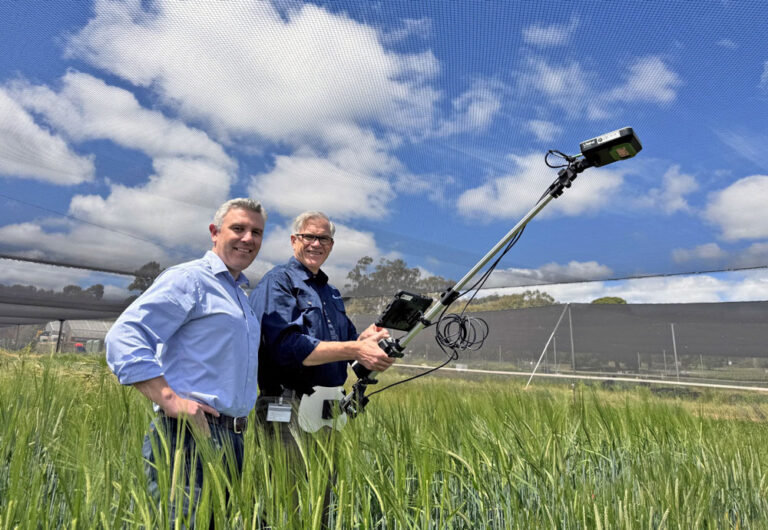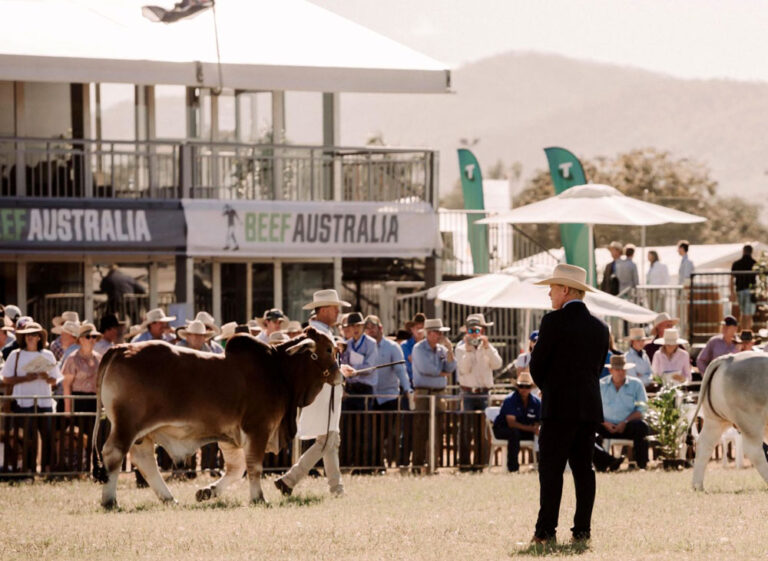Rocks Gone Reefinator H4 is designed to dig up common laterite rock or limestone, crush it and create cropping quality soil down to 600mm deep ideal for sowing to crops or pasture

Since the release of the Rocks Gone Reefinator in 2015 it has been an instant hit with farmers looking to renovate rock-encrusted land that could not be used for grazing or cropping.
The machine has now further improved to an ultimate level with the release of the Reefinator H4.
The Rocks Gone Reefinator was invented by contractor and farmer Tim Pannell, because he simply couldn’t source a multi-pass machine that could dig up and crush and also ameliorate the soil to a 600mm depth to lift crop and pasture productivity.
Before the Reefinator, company founder and former Yuna WA farmer, Tim Pannell, said many growers grappled with the economics of how to best tackle the rocky paddocks, due to no clear method of repatriation.
Tim Pannell has successfully developed the Reefinator H4 to transform these soil areas and economically boost whole farm productivity by crushing rocks and deep ripping with the one machine.
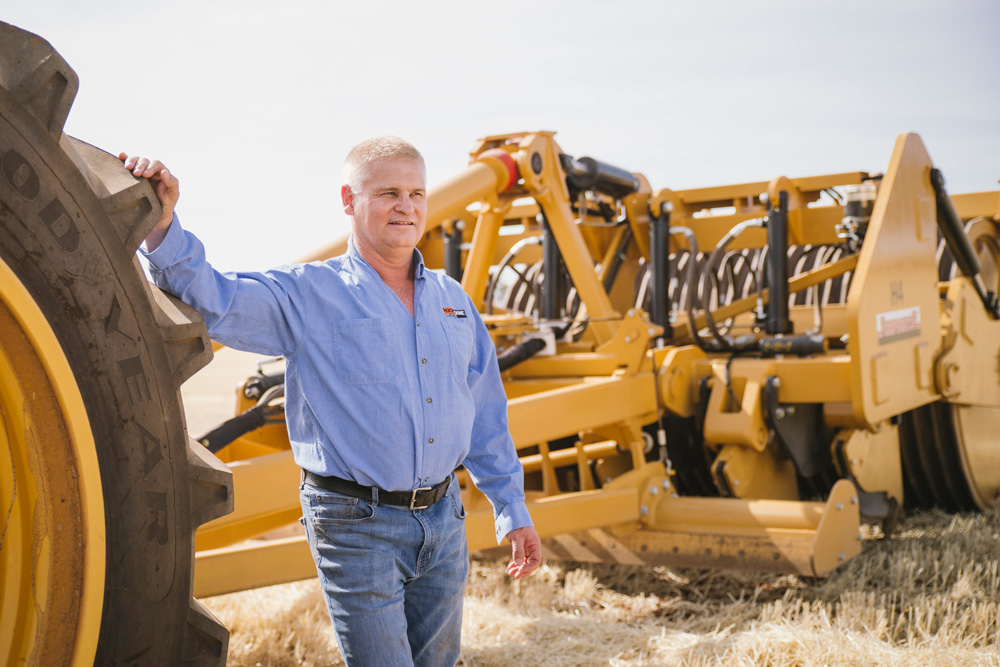
“It’s a primary ripper but is a completely new design from the original 300 Series Reefinator and we called it the H4 Series basically designating that it’s a hydraulically operated machine, so there’s no shear pins on the tines,” Tim outlines.
“The Reefinator H4 is capable of rapidly and permanently transforming rocky outcrops into crop seedbeds.
“Water will stay where the rain falls, instead of running downhill, gathering speed and eroding and causing waterlogging and salinity issues in lower-lying country.
“You can then grow a decently profitable crop or pasture – with the added benefit that the renovated higher country will be less frost prone,” Tim concluded.
Manufactured in Manjimup WA by Rocks Gone, the innovative Reefinator H4 is also available through WSB Distributors in South Australia and Victoria, it has been extensively and successfully used under a range of farming conditions.
Tim Pannell said experience indicated the pay-back period for the Reefinator H4 could be as short as two years in some conditions.
He said the amelioration process also mixed crushed rock back through the soil, which could help to reduce potential erosion problems.
The Reefinator H4 can renovate country at a far greater speed and much more effectively than traditional methods of crushing rock as the machine is also ideal as the first ripper for untouched land and soils that have never before been ripped to depth.
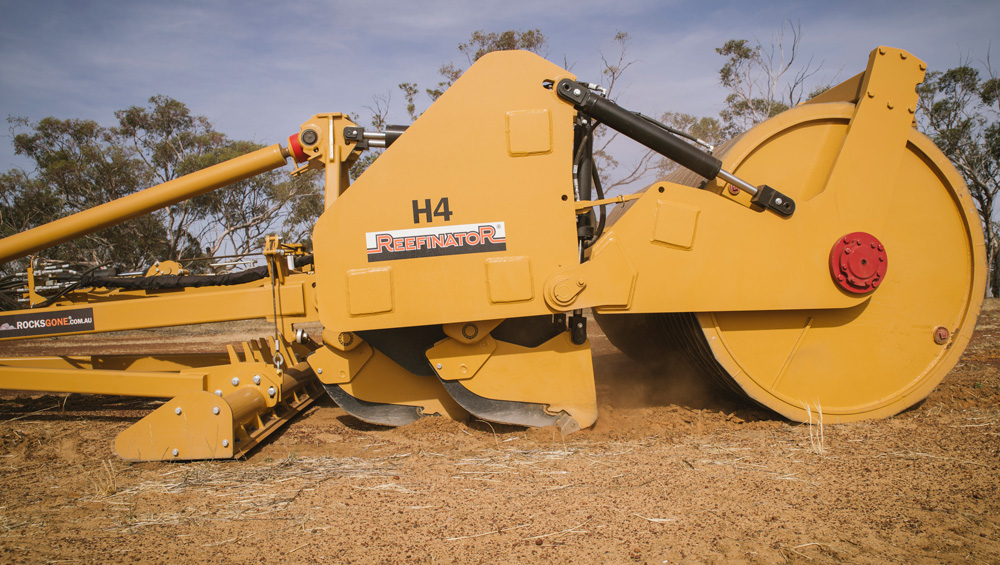
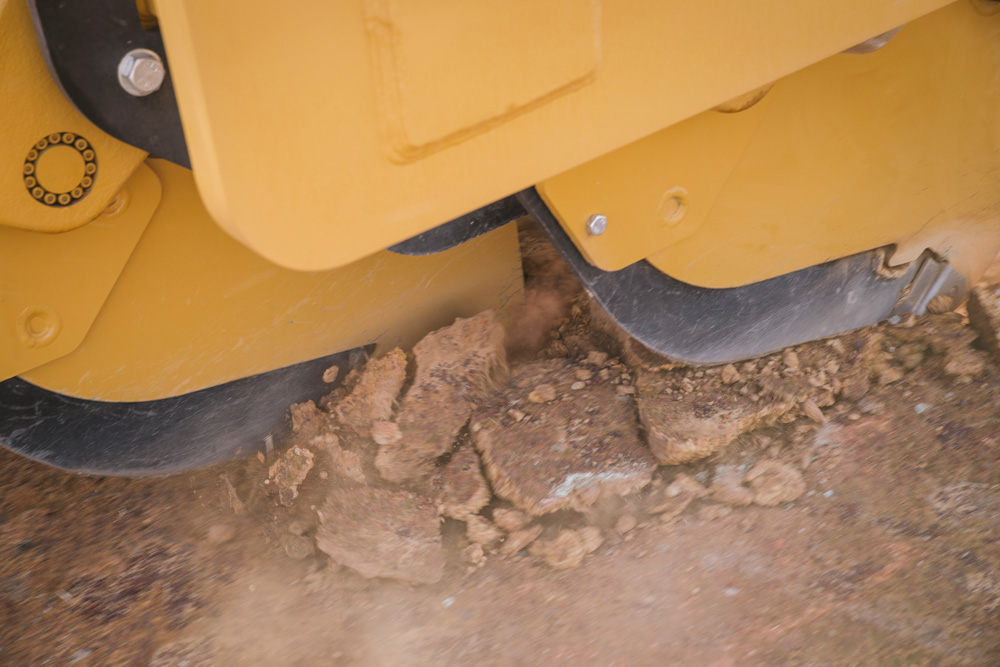
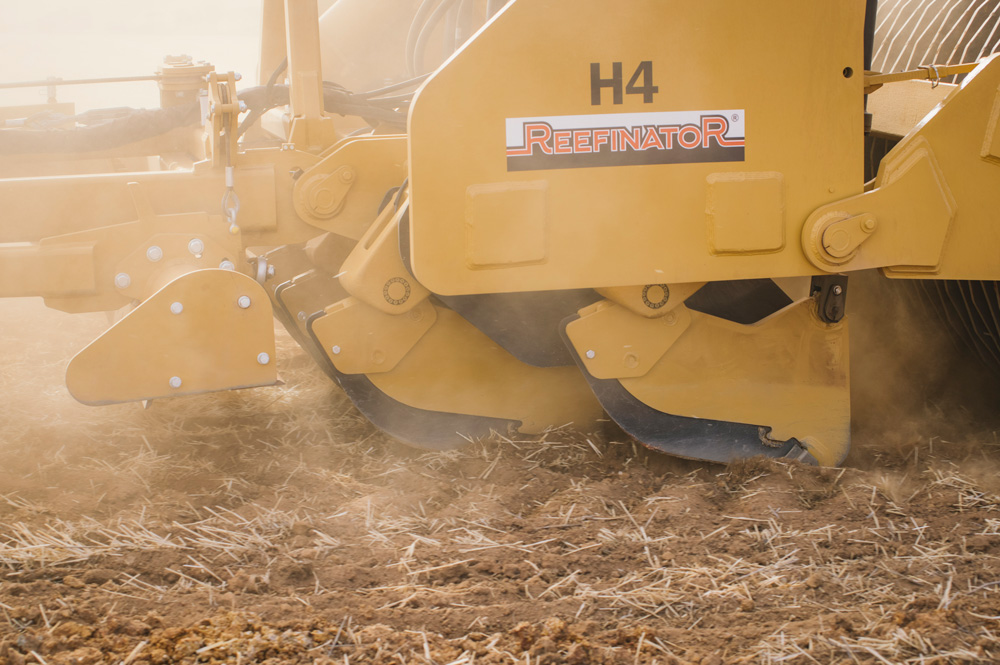
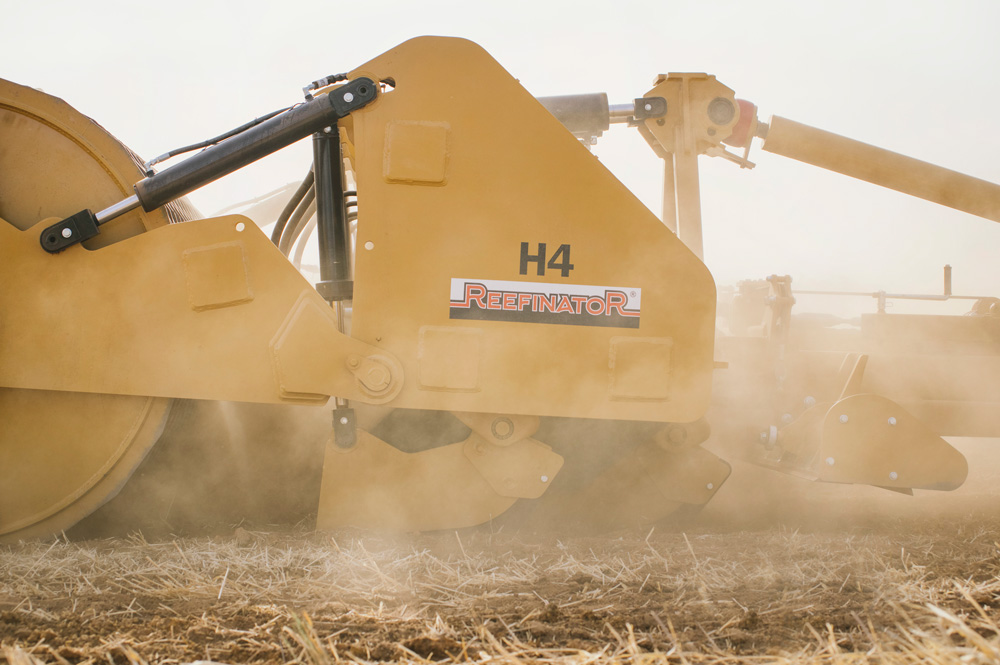
The Reefinator H4 has a working width of three metres and, typically, is operated at speeds of 8 to 10kph.
Some of the rock it is crushing can be at a hardness of about 70 megapascals (MPa), significantly denser than good concrete.
Farmers can typically treat about 10 hectares a day with the Reefinator H4, and that rate is often faster than many other rock crushing methods.
Tim Pannell said there was a cultivation effect, that – in forest gravel type soils in particular – also assisted with: waterlogging/non-wetting; rhizoctonia and soil pathogen management; and crop or pasture seed germination.
Many growers also apply soil amendments – such as lime or gypsum – before using the Reefinator H4 to incorporate these into the soil during the process, to save on passes.
Tim Pannell said the machine was ideally suited for use on country that had a high proportion of stumps and rocks.
Tim added, “Some key improvements had been made to the Reefinator H4 from the previous model, including a hydraulic tine system to replace the manual tine and shear-pin design.
“This allows for more ‘give and take’ when the machine is being dragged over rocks.
“If there is a hidden extra-hard rock, the tine will kick-back but – in the process – the angle of the point becomes a lot steeper, and this will bust the rock,” Tim added.
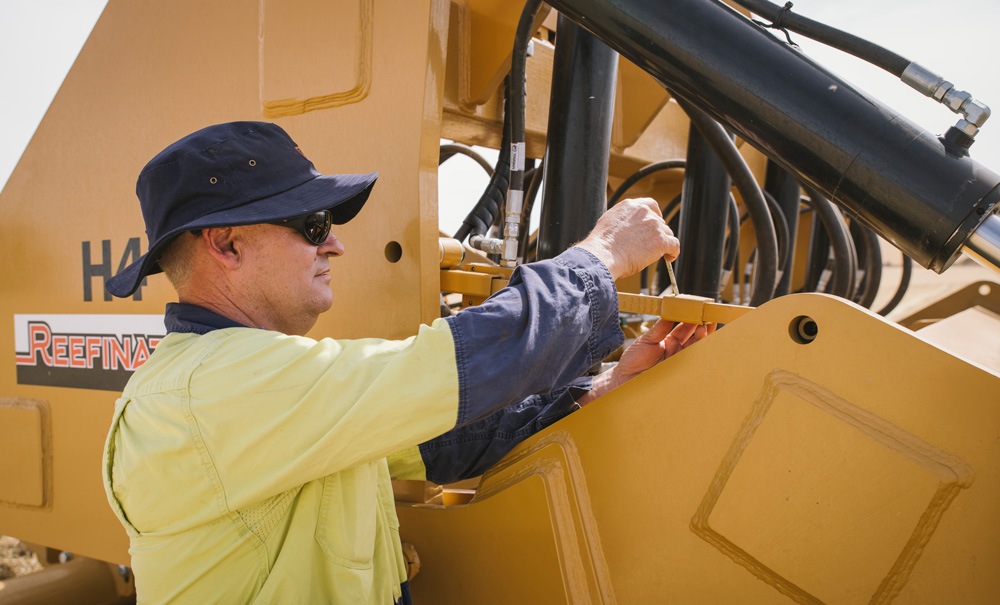
There are four leading tines at the front and five more at the back and the Reefinator H4 now has a cable-suspended, front-mounted levelling blade/smudge bar to help smooth the ground during treatment.
The tine hydraulic system now incorporated a 32-litre accumulator designed to handle up to 3000 pounds per square inch (psi) pressure. But typically, the working pressure range is about 1000-1500psi.
Hoses plumbed from the cylinders are 25 millimetres in diameter to accommodate high speed flow on impact.
“Pressure can ramp-up quickly, and with smaller hoses, oil can’t escape fast enough from the cylinder,” Tim Pannell explained.
The machine’s ribbed roller weighs 30 tonnes when full of water and it leaves an indented surface, which is erosion-resistant and anecdotally been found to improve crop and pasture germination on some soil types.
“Some farmers are seeing a highly improved visual effect when the Reefinator H4 is worked across a paddock between rocky patches,” Tim Pannell concluded.
Reefinator H4 at work
A towed implement, the Reefinator H4 has a grate, much like a cheese grater, that holds down the rock and rips up manageable lumps that can be crushed by the following roller.
After several passes, the biggest lumps of rock you’ll find are only the size of a fist.
The Reefinator H4 is designed to be simple, durable, and low cost to operate.
The designated wear parts and weak points are quick and easy to replace, while the rest of the implement is tough and ready to withstand thousands of hours of work.
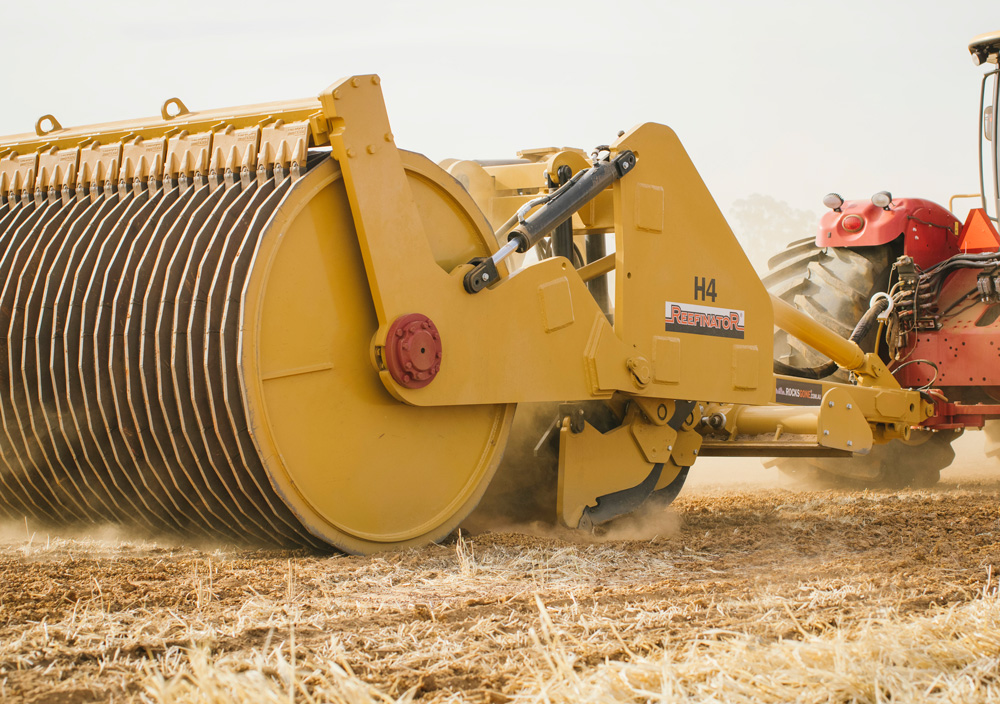
When Jethro Hilton and Fraser Day saw a couple of local farmers using a Reefinator on the Eyre Peninsula SA, they saw a big opportunity to buy one to operate full-time in the South-East of SA.
In March last year the duo started HD Partners Reefinating and have been working across the region from near Beachport to Keith SA on shallow limestone country, as well as on heavily compacted soils.
The Reefinator H4 is three-metres wide and has a combination of nine ripper tines up front and a stone roller to crush any rock that comes to the surface.
“It acts like a guillotine, pushing down on the rock and fracturing it in the soil rather than trying to pull it all to the surface,” Jethro Hilton said.
“The best results are from multiple passes, we try and do two or three passes, each pass you get a bit more depth.
“After three passes we were estimated an average 0.7 hectares an hour for the job.”
Jethro Hilton said his Reefinator H4 is 29 tonnes when the ribbed roller was filled with 6000 litres of water, and it could operate to a soil depth of 450 millimetres but tended to produce 250 to 300mm of workable soil.
He said the costs varied between $600/ha and $1000/ha for three to four passes and farmers who were starting with just a paddock or two, were pleased with the results.
“Some of the comments are that they are turning almost useless land into some of the most productive parts of their farm,” Jethro added.
Land value increase
Rocks Gone sales manager Darren Smith, also farms at Kukerin WA, and said the Reefinator can essentially turn inarable land into arable farmland that has been found to produce excellent crops.
Darren purchased a Reefinator himself and said it revolutionised the way he farms.
“I purchased a farm no one would really buy knowing I could improve it by reefinating, and everytime I do, my equity just goes up and up,” Darren Smith said.
For new buyers of the current Reefinator H4 model, Darren Smith said growers soon get their full investment back as crops that are grown on reefinated paddocks get significantly higher yields than nearby unreefinated paddocks and well above their farm average.
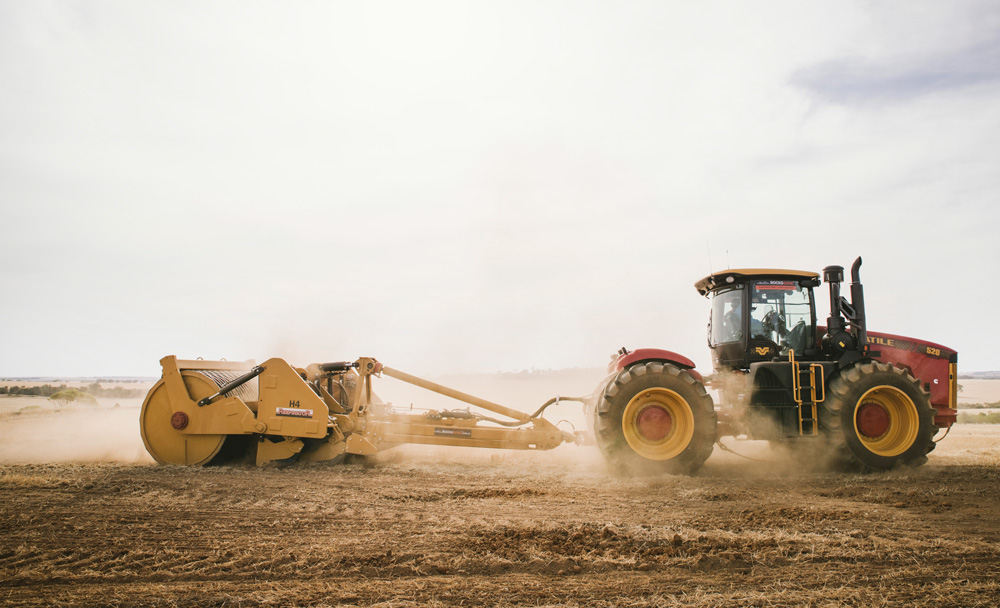
Darren also added, “The Reefinator has managed to hold its value well, claiming a depreciation rate of only five to 10%.
Earlier models retailed new between $120,000 to $170,000 and at a recent clearing sale in South Australia, a Reefinator RGV200 sold for $120,000 and a Reefinator transport dolly sold for $12,000 in addition.
Darren said customers have been mostly farmers, with a few contractors and some farmers have been doing contracting on the side as well.
“We’ve had a big year in sales, and it is now very common to hear the term ‘reefinated’ as a recognised practice in local farming,” Darren added.
“Last year, for example, some of the reefinated country produced exceptional yields, especially where good rainfall was recorded.
“I’ve seen land go from nothing to three or four tonnes a hectare after it has been reefinated but overall, most feedback I get from owners is at least a tonne better than their average yield.
See more on the Rocks Gone website at: rocksgone.com.au or tel: Rocks Gone on 08 9288 2993.
For growers in South Australia and Victoria, talk direct to WSB Distributors on tel: 08 8842 2177, on mobile: 0419 828 802, or send an email: admin@wsb.com.au


